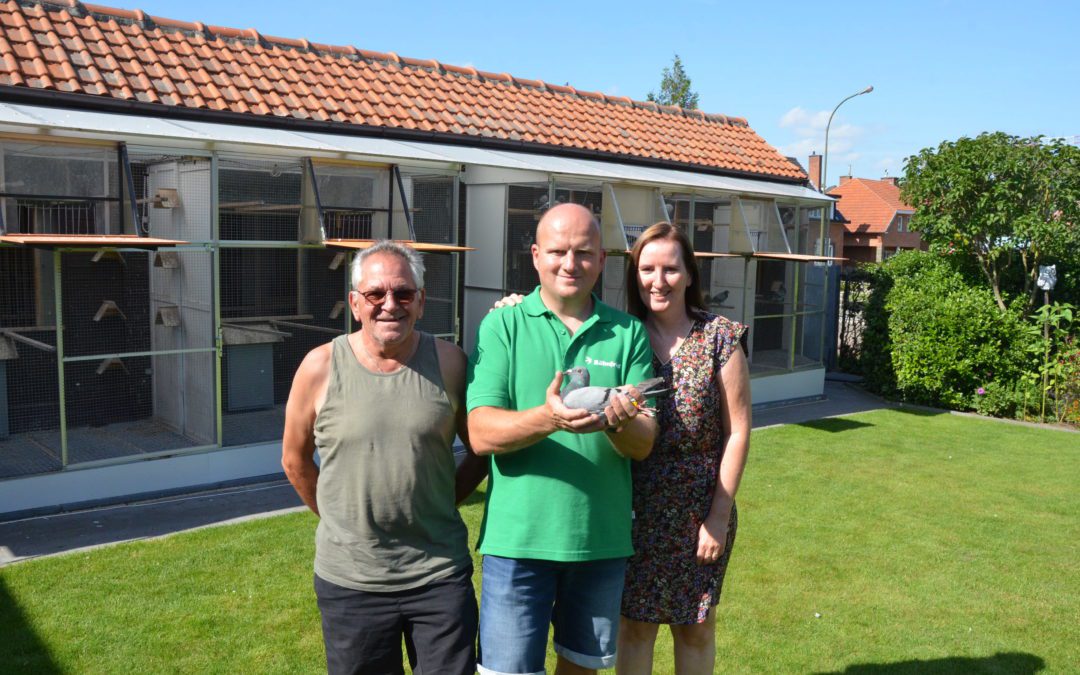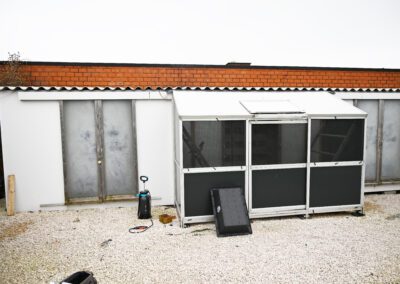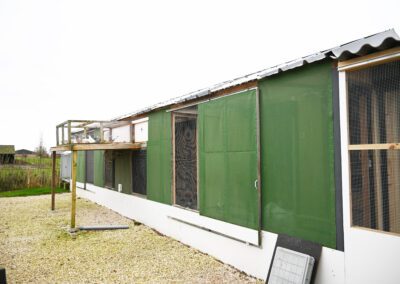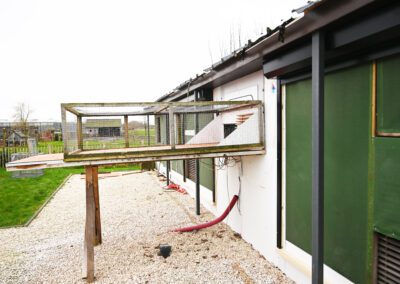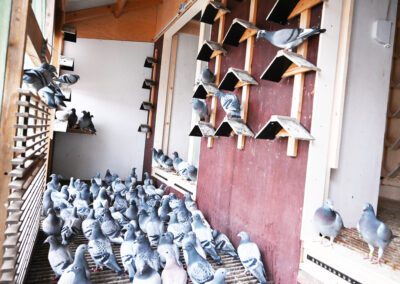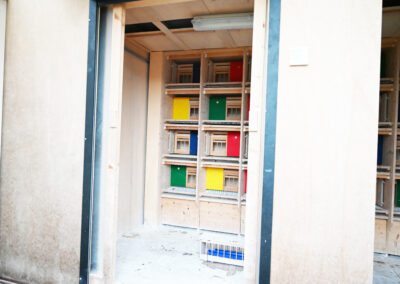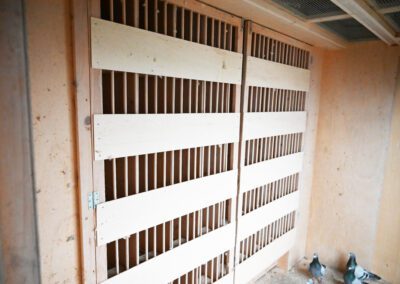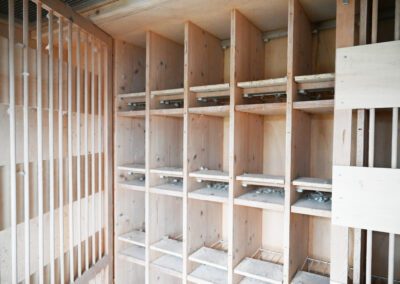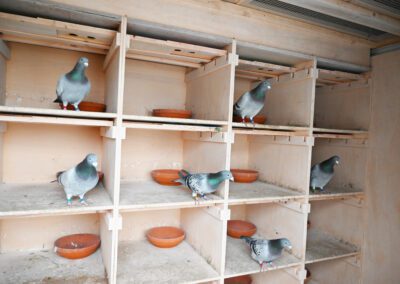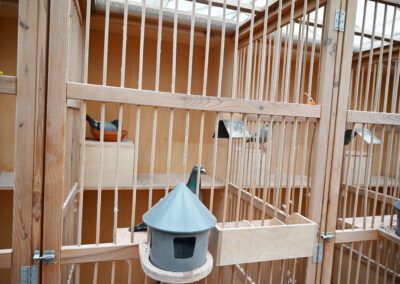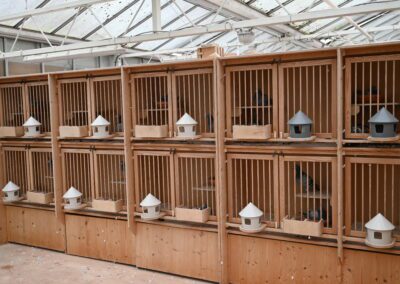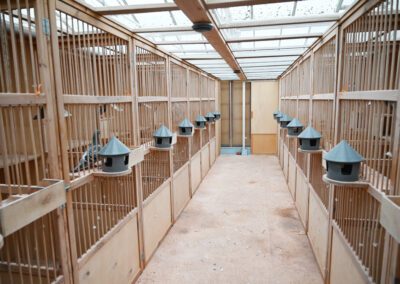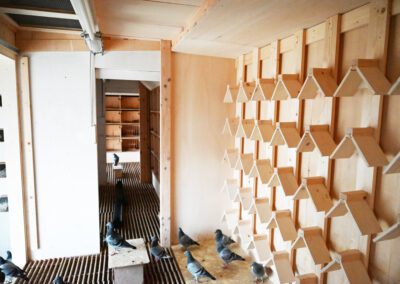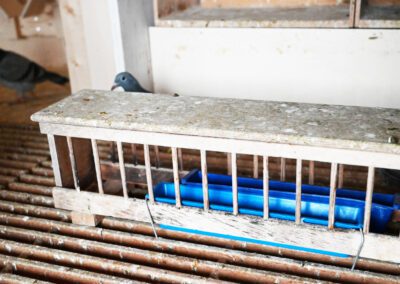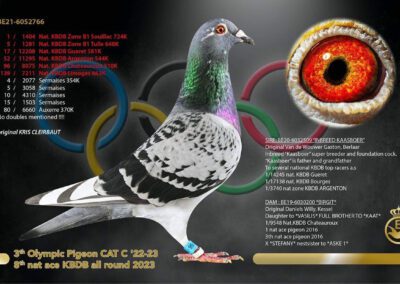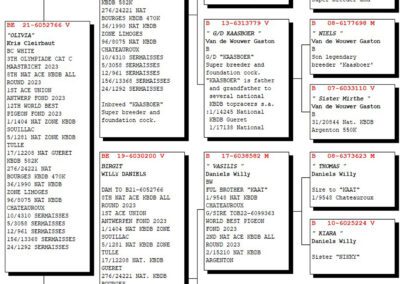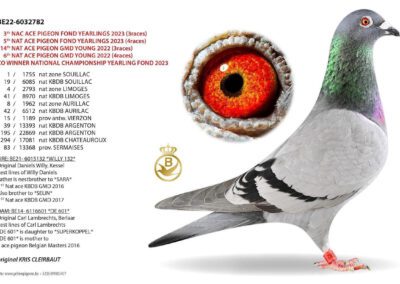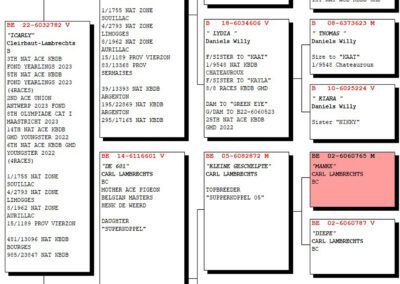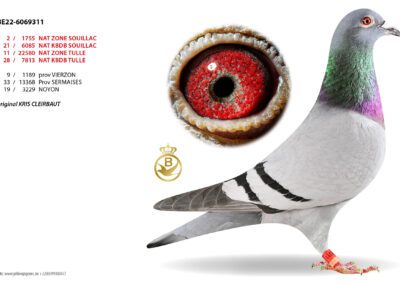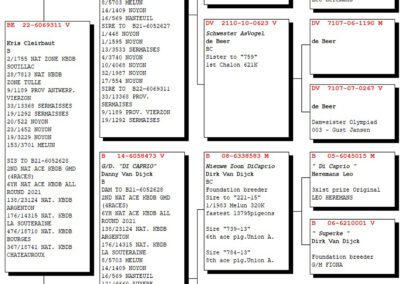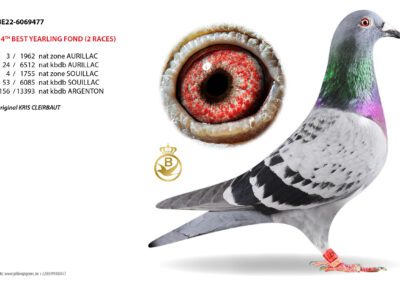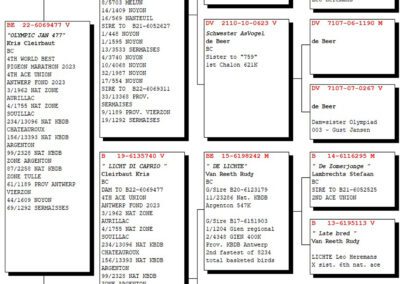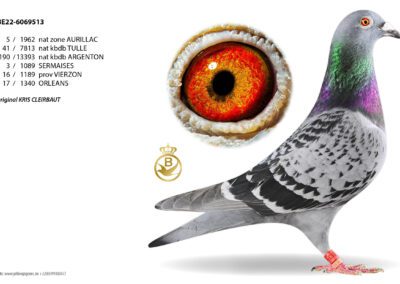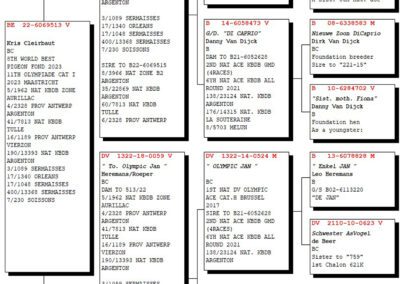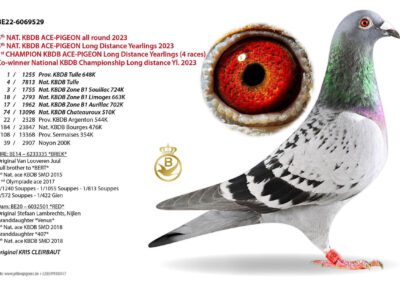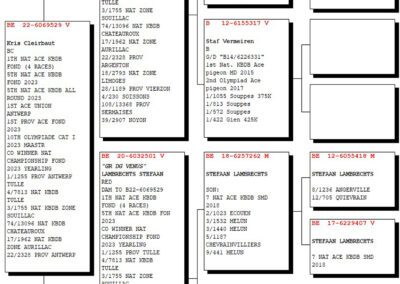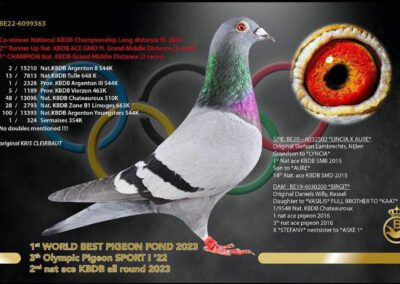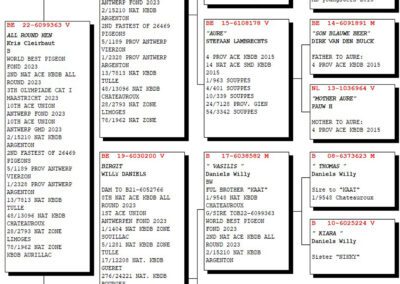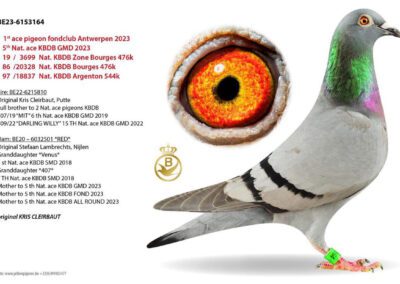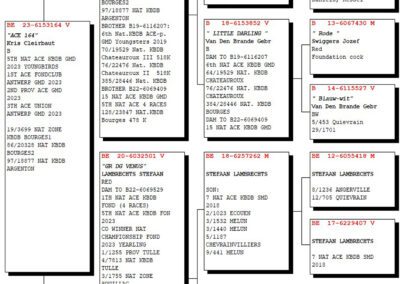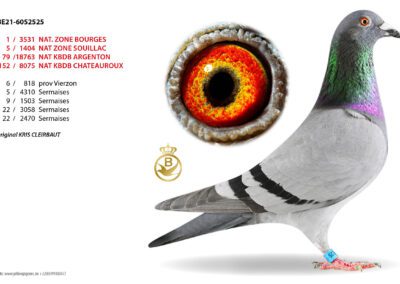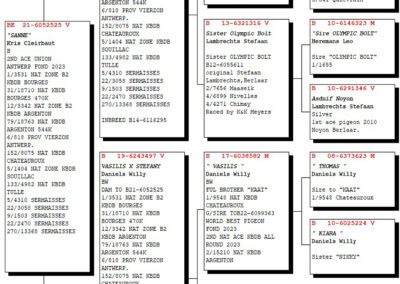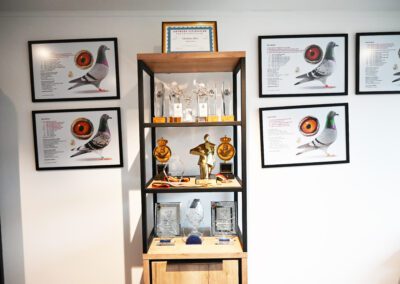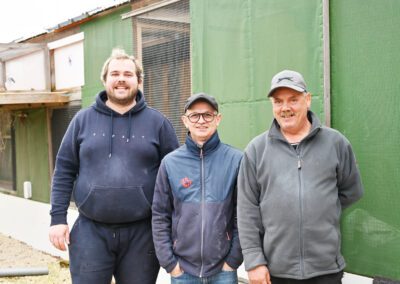Sabrina Brugmans – Halen
1st National ace KBDB middle distance 2020
1st National La Souterraine 8,383 old birds 2021
1st National Argenton 23,124 youngsters – fastest of 32,971b. 2021
What a season for Sabrina Brugmans and her husband Stephan Machiels from Halen in province Limburg (Belgium). We always think, it won’t work any better, but every year they surpass themselves. Proof that super motivated fanciers with a very tight plan under their belt usually get there. During the 2014 season, “Charlotte” shone by winning the 1st National Ace pigeon title heavy middle distance yearly KBDB. The bloodline of “Charlotte” has been a blessing for the current top birds of this colony, Stephan strategically set out the lines on the breeding loft and it only got better afterwards. Sometimes dreams do come true!
The whole story reads like a fairy tale. A year later, 2015, the first national win from Bourges was achieved. “Valère” won against 36,315 youngsters! National ace pigeons and national winners, we all want that so badly and the cross between “Valère” and “Charlotte” created fireworks. Or how in almost all current toppers always 1 of these 2 bloodlines is present.
In the years that followed, national Top-10 ace pigeon rankings were achieved every year and the number of provincial wins is almost impossible to keep up with.
In corona year 2020 “Louise” shone with the 1st national ace pigeon title and this season “Sabrina” and “Hanne” achieved a national victory. What will the future bring?
1st National Ace pigeon KBDB “Louise”
“Louise” B19/5050615 is the 1st National Ace Pigeon KBDB Small Half Distance Yearlings and 1st Ace Pigeon Olympic Hope Yearlings Cat. G. She is a rather small but checkered pigeon. She is a well-muscled blue, white pen, soft of plume and she has a bright head.
She flew the head 5 weeks in a row. With head wind or wind under the tail, it all played no role in flying early.
She was also paired with the fancier, and it went so far that when she heard his voice she came outside and walked to the front of the aviary. At the loft she had a permanent shelf that she always sat on and was always ready for a round of fist fighting. That was the extra motivation for her while she also had her regular cock. She became 1st Nat. ace pigeon with 1st Sermaise 4267 d, 2nd Sermaise 6804 d, 3rd Sermaise 1094 d, 4th Sermaise 3254 d.
“Sabrina” B19-5082780
Is a very beautiful hen in hand. Medium in type and blessed with an iron carcass and strong musculature. The fact that she went into the basket as 1st signed for La Souterraine makes us suspect that she has already more than proven her ability and we are right. The following results are already on her record of achievements:
3rd Provincial ace KBDB young birds
2nd Prov. Argenton ’19
60th nat. Tulle’ 20
7th prov. Argenton ’21.
“Hanne” B21-5030027
The national winner is “Hanne” B21/5030027, named after the name of the daughter of the visiting fancier who saw the national winner arrive. Stephan experienced her arrival only with difficulty because he just received a phone call from a French pigeon fancier reporting a pigeon that had flown in. “Hanne” is a blue hen that had bumped 1 wing feather at the time of her victory. It is a small but beautifully built, white-eyed hen. Despite not having a steady partner, she won for her win:
261st nat. Vierzon (Bourges) 18,710d.
7th Soissons 390b.
13th Sermaises 761d.
39th Sermaises 1249b.
and now completed with 1st national Argenton!
The start
Father Adolf Machiels was also a pigeon fancier and raced mainly the sprints at medium level. Stephan also raced together with father, but their ideas clashed more than once. He got his own loft at home where he could do his own thing. They raced under the name Machiels and Son, but it was always a race within a race between the two lofts. With the youngsters Stephan was better than father.
Father passed away in 2000…at the pigeon loft. Then Stephan wanted to prove that he was better than his father and he continued to race old and young pigeons at home for three more years. In 2004, at the current location, he started with young pigeons under the name of his wife Sabrina Brugmans and then continued racing under the name of his wife.
The first pigeons in the loft of Sabrina Brugmans came from father and Stephan. Their colony was based on pigeons from fanciers from the neighborhood. In 2005 Stephan Machiels received a pigeon, the “Blauwe Valère”, from his current partner Valere Machiels who is not a relative.
With 5 prizes in two years’ time, the “Blauwe Valère” was not an excellent racing pigeon but it did give good breeding results. He became the father of “De Willy” who turned out to be the ancestor of Sabrina Brugmans in the period 2011 – 2016. He does not fertilize anymore but in about 30 breeders we find his bloodline back. The basis is still pigeons from father and a cock from Valère crossed with pigeons from Roger Buvens, Loksbergen. There were also pigeons from Hermans-Bonné, Loksbergen and Gaston Van de Wouwer, Berlaar. The most successful were the pigeons of Roger Buvens but also from Hermans-Bonné there is a hen from which the 1st National Bourges came. At this moment she is the foundation hen of the loft. Also, from a hen of Gaston Van de Wouwer several national ace pigeons were bred. With Roger Buvens they already bred a few times together.
Only with hens
Only yearling and old hens are played on widowhood. Sabrina Brugmans started with 60 hens on widowhood. When they have been raced a couple of times, they are paired with the cocks in groups and come together for about 5 days. It takes 3 weeks before all hens are paired. When the hens are paired, the widowhood begins.
On March 1, the training at home begins. In the beginning the pigeons are released once in the afternoon and then the training is systematically built up to 1 hour to 1.5 hours of flying. Re-racing starts in mid-April when the weather is good, and the racing team is led away in 4 states until 25 km. After that they are not taken away in between. They then fly 1 training flight with the company and after that it’s 2x Momignies, 2x Soissons and then middle distance. Then the national races follow, and some hens have 8 national races in the wings and others only four.
The first races are played without cocks. After that, hens and cocks meet every week at basketing for half an hour.
The speed pigeons stay together for about 20 minutes after arrival of a race. The other pigeons 1 hour at the beginning of the season and as the season progresses longer and longer. The pigeons from the middle distance and one-day long distance sometimes stay together until the next morning.
When there are problems with mutual mating, the pair is separated. There are two lofts for the hens and so the pair can easily be separated.
The youngsters
About 100 youngsters are bred to play with. The youngsters are weaned at the age of 24 days. They are darkened from 18 h till 8 h in the morning from half March till half June. Three weeks before Bourges and until the end of the season, they are given extra light until 22.30 in the evening and from 5.30 in the morning.
During the training, the youngsters are taken away 5 times up to 35 km. Then they go with the company on a training flight of 60 km. Normally the youngsters are not taken away between the flights. Before the races, the youngsters train only once a day. During the racing season they train twice a day like the old pigeons. The sliding door is introduced after the 4th or 5th race. The youngsters are played from speed to national races.
Thursday morning cocks and hens train together. When the youngsters train, the loft is converted with hideaway corners and cardboard boxes. Then they can stay together for 2 to 3 hours. They are then separated and given a full meal around 16h00. Then they are basketed around 17:30.
Several old racing hens were lost so that some old cocks became free. Five young hens were paired with old cocks and that was a real windfall.
Feed and medical
When asked about care, Stephan explains his system in broad terms as follows: “In the winter I used “Aidi Winter Rust” mixtures, but I found that my pigeons liked to eat this mixture and therefore I always fed it generously. Then, when the training rhythm goes up again, I switch to “Girl Power” from Aidi and “Winter / Rest”. I then give this 50/50 and as the last day I use “Turbo Extreme” from Matador. I even did this during the first flights of the season because these flights were always flown with head wind and therefore were not easy flights. Also in such flights, the pigeons must have enough energy in the tank.
As an extra they get peanuts, candy, P40, grit and Tovo after their portion of feed and I mix different types of grit to offer them variation.
The by-products I give them are mainly Entrobac, Atemfrei, Moorgold, Carni Speed and Rotosal from Röhnfried together with Immunol and Konditiepoeder from Schroeder – Tollisan. On the day of basketing I always keep it with C-M-K from Brockamp.
For the medical picture of this season, I gave them mid-February a cure for Para typhus and after that also a vaccination and half March they got their Paramixo vaccination. I also went to Vincent Schroeder for a check-up and the hens were clean, but their cocks were infected with tricho. Therefore, no risk was taken, and the hens were treated for 4 days for tricho. After 6 races they were treated for 3 days for respiratory infections.
There are aviaries in front of the lofts and therefore the pigeons have few problems with respiratory infections. Before basketing the pigeons are given eye drops. In case of problems with adeno, the pigeons are given little food for a few days, and they receive a product from the vet together with electrolytes. In case of “one eye cold” the pigeons stay at home for a week and are treated with Clinagel grease.
They are raced on 13 m garden lofts. The pigeons sit on a wooden floor and the youngsters sit on straw. Because of the aviary in front of the loft, the ventilation strip on the loft is completely closed. Only the window of the aviary serves as ventilation. The windows have a double layer of mosquito netting. The aviary in front of the pens is 1.2 m deep. There is a strict hygiene on the pens. They are cleaned every day and the drinking pots are changed daily. After the molting period there is a thorough cleaning and disinfection of everything.
The breeders are coupled around December 15. They are given two to three years to prove their worth. Family breeding is done but not too closely. All years, most breeding pairs are re-paired with the exception of those that produce decent offspring. Stephan pairs his pigeons according to his own eye theory, paying particular attention to the circle of exploration. He pairs pigeons with a wide reconnaissance circle against pigeons with a narrower reconnaissance circle.
And in terms of selection…old and yearlings are judged on results. The young hens that remain after the season may try next year as yearlings. With a good model, sifting is considered.
When asked what the good qualities of a pigeon are, Stephan’s answer is short and to the point a pigeon that flies early on weekends! The pedigree is not so important, if they are good ones!
